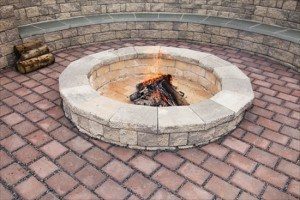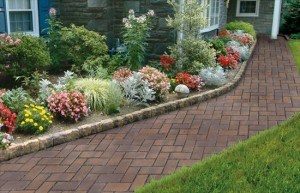The weed-free, green lawn that dominates landscape design in suburban America today didn’t exist until the late 18th century. Our forefathers were the original organic gardeners with front “yards” that were much smaller and they were functional in nature.
America’s extreme temperatures allowed homeowners to grow seasonal vegetables and herbs, and the thought of taking food-producing land and planting ornamental grass would have seemed a fool’s project.
America’s Love Affair with the Lawn Started as a Crush
Immigrants from Northern Europe planted both the literal and proverbial seeds of grass lawns. Originally, only the very wealthy could afford to hire the human labor needed to maintain a lawn. Weeding, shearing (with a scythe) and watering (with a bucket) all had to be done by hand.

Common-area parks or those with larger plots utilized sheep herds to maintain the grass height, control weeds and fertilize their grass lawn. It wasn’t until the Industrial Revolution (when suburban homes began popping up and Edwin Budding invented the push lawnmower) that our love of lawns bloomed and really took off. Garden Clubs promoted lawns in landscape design by promoting that a tidy home was one that had “a plot with a single type of grass with no intruding weeds, kept mown at a height of an inch and a half, uniformly green, and neatly edged.”
Community planners and architects outlined larger front lawns (known as a front setback) into their plans and new homeowners knew that lawn care was in their future.
Green Costs Green
The cost to maintain a front lawn varies. Depending on the size and where you live factors in, as well as your landscape design.
Flower beds require edging and a heavily wooded lot means lots of tree trimming and fallen branch removal. Watering, weeding, and fertilizing are all needed to maintain a healthy and lawn.
Go Green

One way homeowners are lowering the cost of curb appeal and increasing their home’s value is by installing earth friendly eco pavers. These permeable pavers eliminate the cost of lawn maintenance while remaining earth friendly.
Permeable pavers work by allowing rain to pass through sand filled joints into an open graded base. By allowing rain water to enter the ground, instead of into storm drains, you are allowing the land to complete its natural cycle of filtering out contaminants and recharging ground water aquifers. Not only will you be lowering your lawn maintenance costs (by lowering its square footage) you’ll be increasing your home’s value. Outdoor living is more and more popular these days.

By incorporating eco pavers into your landscape design and patio, you’ll be increasing your home’s livable square footage, and therefore, its resale value. The return on investment when installing eco pavers is high. Used out front, paved walkways instantly give homes a feeling of stability and warmth. In driveways, rainwater can be harvested for flower beds and car washing.
While permeable pavers can be a installed by the do-it-yourselfer, proper installation is key. This is a project that is best handled by an industry expect to ensure the paving system performs properly. Ultimately, any kind of pavers increase your home value and add curb appeal, while enhancing the local environment. It’s an investment worth making, both for your home and the world around you.